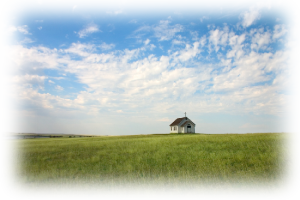Risk Management Issues for Small Rural Churches
November 8, 2012 - 4 minutes read While all church communities carry risks that need to be properly managed, smaller rural congregations may face a number of particular safety and security concerns. These may be present due to being positioned in remote locations, and in some cases to meeting and gathering in older buildings that have not been upgraded to current standards.
While all church communities carry risks that need to be properly managed, smaller rural congregations may face a number of particular safety and security concerns. These may be present due to being positioned in remote locations, and in some cases to meeting and gathering in older buildings that have not been upgraded to current standards.
Electrical and fire safety:
Older buildings may have electrical systems and wiring not designed for modern electricity demands, which may create a fire-risk from overloaded circuitry or damaged wiring or electrical equipment. In addition, old timber building structures may be more susceptible to damage if a fire does occur. In these cases it’s important to get the property thoroughly inspected by professional electricians and fire experts to determine what upgrades need to be done for reasons of safety.
It’s also important that country church communities have a solid fire emergency plan in place, especially if the church building is situated at a long distance from the nearest fire station.
You can find more tips on electrical safety here, and on various aspects of fire safety here.
Security:
Being situated in a quiet and remote location may make a church vulnerable to attack from arsonists, vandals and burglars. This makes good security very important to help reduce the risk of loss, damage and injury. A proper system for locking and securing the property is as important as it is for city and suburban churches – see the article on key-and-lock management for more information. In addition, it’s preferable not to keep cash or valuables on the premises but if this does happen, it should be kept to a minimum. Valuable items should also not be visible to the public.
Outdoor safety:
It’s vital to keep outside areas safe to avoid slips, trips, falls and other accidents from occurring. This includes grounds maintenance and conducting prompt repairs to car-park areas and walking paths. Outdoor steps should be kept in good condition and marked with brightly-coloured strips if they are hard to see – more tips on steps and stairs safety can be found here.
Structural considerations:
The church’s buildings should be inspected annually and upgraded and repaired where necessary. This may include having roof and other structural inspections done by professional contractors. In addition, if the building has stained-glass windows, methods to keep them well-protected from damage should be considered. More information on this can be accessed here.
Indoor safety:
It’s important to take action to promote safety inside the building. This includes dealing with slip and trip hazards such as wet floor surfaces, buckled floor coverings, and obstacles such as extension cords or boxes. If stairways are present they should be properly maintained with adequate railings to reduce the risk of falls.
Who should manage these risks?
In a small country congregation, responsibility for management of security and safety should not be totally left up to the minister or another individual. It may be necessary to appoint a group or committee to oversee various aspects of risk-management, including building and grounds maintenance, to help ensure that the risk of property damage, accident and injury is minimised at all times.
CCI also recommends the RedBook program for church building essential safety measures and compliance. See our previous article for more information.
Written by Tess Oliver
Tags: asset protection, health & safety, risk management, security
Recent Comments